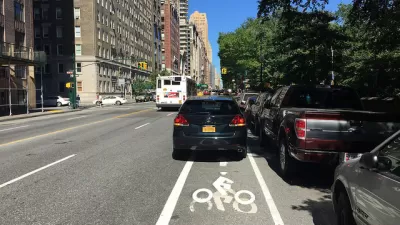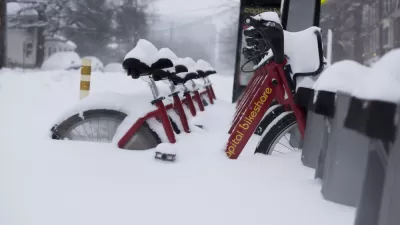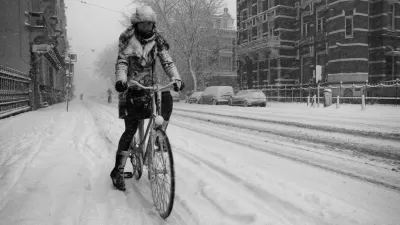In which parking minimums figure heavily in a polemic regarding the nature of cool.

Jordan Fraade follows up on the recent (perpetual is more like it) proliferation of city rankings, such as "Most influential," "Strongest brand," and Most livable," with a post responding to the "America's coolest cities list" published by Forbes. Fraade's problem with the list, in fact, revolves around one of demography's favorite subjects, the urban hipster, as well as two of planning's favorite subjects, bike lanes and parking minimums.
The list selected Washington D.C. as its coolest-of-the-cool cities. Although Fraade acknowledges that the nation's capital is worthy winner, he also notes the trouble with the list. "The problem with a 'coolest city' ranking is the way it takes things any city ought to be proud of – diversity, urbanity, art, energy, walkability, transit accessibility – and attaches them to a polarising sociological identity. Most Americans probably don’t have strong opinions about multimodal transit, or bicycle infrastructure. But they do have strong feelings about snobbish urban hipsters."
In fact, writes Fraade, "DC shines so bright in Forbes’ eyes that it appears to have blinded the magazine to the fact that a local backlash against 'cool kids' is under way."
As evidence of the backlash Fraade discusses Washington D.C.'s last minute retreat from reforms to minimum parking requirements when the city recently rewrote its zoning code. Additionally, the work of anti-bike columnist Courtland Milloy is cited as evidence of the general public's general distaste for all things hipster, even when those things are bike lanes with multiple and quantifiable benefits.
FULL STORY: The big problem with 'coolest city' lists

Alabama: Trump Terminates Settlements for Black Communities Harmed By Raw Sewage
Trump deemed the landmark civil rights agreement “illegal DEI and environmental justice policy.”

Study: Maui’s Plan to Convert Vacation Rentals to Long-Term Housing Could Cause Nearly $1 Billion Economic Loss
The plan would reduce visitor accommodation by 25% resulting in 1,900 jobs lost.

Why Should We Subsidize Public Transportation?
Many public transit agencies face financial stress due to rising costs, declining fare revenue, and declining subsidies. Transit advocates must provide a strong business case for increasing public transit funding.

Paris Bike Boom Leads to Steep Drop in Air Pollution
The French city’s air quality has improved dramatically in the past 20 years, coinciding with a growth in cycling.

Why Housing Costs More to Build in California Than in Texas
Hard costs like labor and materials combined with ‘soft’ costs such as permitting make building in the San Francisco Bay Area almost three times as costly as in Texas cities.

San Diego County Sees a Rise in Urban Coyotes
San Diego County experiences a rise in urban coyotes, as sightings become prevalent throughout its urban neighbourhoods and surrounding areas.
Urban Design for Planners 1: Software Tools
This six-course series explores essential urban design concepts using open source software and equips planners with the tools they need to participate fully in the urban design process.
Planning for Universal Design
Learn the tools for implementing Universal Design in planning regulations.
Smith Gee Studio
Alamo Area Metropolitan Planning Organization
City of Santa Clarita
Institute for Housing and Urban Development Studies (IHS)
City of Grandview
Harvard GSD Executive Education
Toledo-Lucas County Plan Commissions
Salt Lake City
NYU Wagner Graduate School of Public Service





























